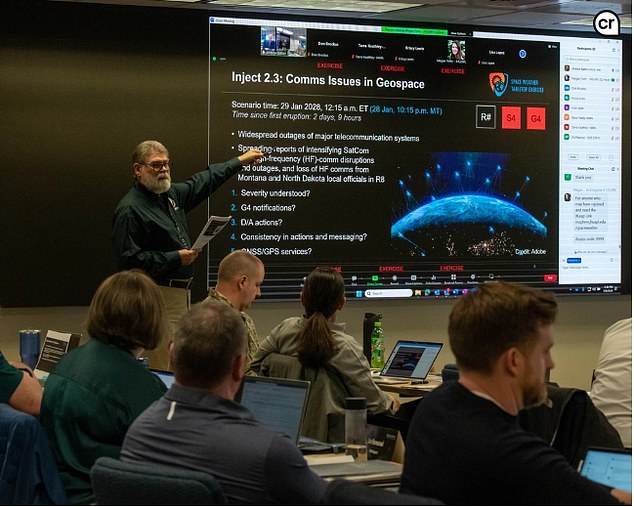
Urgent Alert: Solar Storm Threatens Crippling Blackouts, Widespread Travel Chaos – ‘Unprepared’
Scientists Warn of Impending Solar Storm Threat: Prepare for Chaos
Scientists have issued urgent warnings as a powerful solar storm is predicted to hit Earth this week, potentially triggering widespread blackouts, communication failures, and disruptions to critical infrastructure. Recent simulations conducted by experts highlight humanity’s vulnerability to extreme space weather, emphasizing the need for better preparedness.
Emergency Drill Reveals Dire Consequences
During a “solar storm emergency drill” led by the U.S. Space Weather Operations, Research, and Mitigation (SWORM) task force, researchers simulated geomagnetic storms of varying intensities. The scenarios revealed catastrophic outcomes:
- Power grid collapses across the U.S., with blackouts lasting weeks on the East Coast.
- Critical infrastructure failures, including railways, pipelines, and GPS systems.
- Soaring gas prices and transportation chaos due to paralyzed freight networks.

Simulations showed potential power grid failures and communication breakdowns during a solar superstorm (Image: Daily Mail).
The most severe “internet apocalypse” scenario involved a solar superstorm disrupting global connectivity and energy systems. Scientists stressed that current forecasting technology provides just 30 minutes’ warning before a coronal mass ejection (CME)—a massive burst of solar plasma—strikes Earth. This leaves little time to protect satellites, power grids, and communication networks.
NASA’s Warning: Solar Storm Incoming
NASA recently detected an X2.7-class solar flare—the strongest category—on May 14, 2024, followed by additional eruptions. These flares, often paired with CMEs, threaten to destabilize satellites, radio communications, and navigation systems. The agency warned of potential blackouts across Europe, Asia, and the Middle East, with minor power degradation reported in the eastern U.S.
Meanwhile, states like Alaska, Washington, and Maine may witness dazzling northern lights as charged particles interact with Earth’s atmosphere.

X-class solar flares can create auroras but also cripple infrastructure (Image: Daily Mail).
Lessons from the Gannon Storm
In May 2024, Earth experienced its most powerful solar storm in 20 years. Dubbed the Gannon Storm, it forced satellites to reposition and caused localized power outages. The event underscored the fragility of modern technology in the face of space weather.
Urgent Calls for Action
Scientists urge governments to prioritize space weather preparedness, akin to planning for hurricanes or cyberattacks. Recommendations include:
- Launching advanced satellites for real-time solar monitoring.
- Expanding sensor networks to improve forecasting.
- Strengthening collaboration between agencies and private sectors.
“An extreme solar event could devastate infrastructure and national security,” warned SWORM’s report.
Solar Activity on the Rise
The sun is currently in an active phase of its 11-year cycle, with multiple sunspot regions now visible. The UK Met Office predicts continued low-to-moderate flare risks but cautions that even minor solar eruptions can escalate into severe geomagnetic storms.

Scientists track solar activity to predict potential threats (Image: Daily Mail).
The Bottom Line
As society grows more reliant on technology, the stakes for space weather readiness have never been higher. From internet outages to satellite malfunctions, the risks demand global cooperation and proactive investment in early-warning systems. While auroras paint the skies, the hidden threat of solar storms serves as a stark reminder: Earth remains at the mercy of the sun’s fury.
(Word count: ~600)


